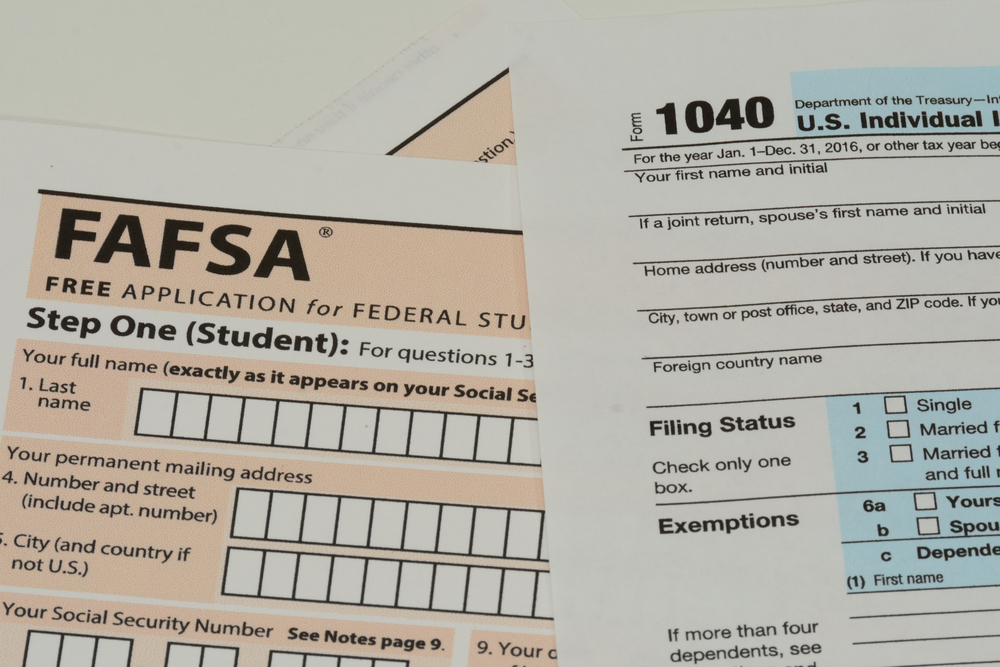Financial aid can be the difference-maker for those considering college.
That’s why students of all backgrounds are encouraged to fill out the Free Application for Federal Student Aid, or FAFSA, which determines eligibility for grants, fee-waivers and low-interest loans.
But not all students know to pursue these resources, and some groups have been historically underrepresented in the pool of applicants — including foster youth.

To change that, OCDE, the Orange County Social Services Agency and a number of partners made a push this year to help high school seniors in foster care apply for financial aid, participating in a statewide competition known as the California Foster Youth FAFSA Challenge.
The effort has paid off, with 71 percent of Orange County’s high school seniors in foster care completing their FAFSA applications in 2018. The goal of the campaign was to reach 61 percent.
“Orange County feels strongly about the importance of college readiness for foster youth, which includes the financial support necessary to be successful in their pursuit of higher education,” said Raina Lee, a coordinator with OCDE’s Foster Youth Services program.
In recognition of Orange County’s success rate, the California Foster Youth FAFSA Challenge recently announced that OCDE and its partners had placed first among large counties. The honor comes with a $1,000 award from John Burton Advocates for Youth, a San Francisco-based nonprofit that organized the challenge.
“Prior to learning that Orange County won the FAFSA Challenge, our county decided that we would continue our efforts in actively supporting foster youth to complete their student financial aid applications in the coming years,” Lee said. “Winning this award gives us the opportunity to provide more scholarships to students who will be graduating high school next year.”
And they’ll do so with an effective template.
From November 2017 through May 2018, OCDE and its partners formed the multi-agency FAFSA Challenge Strategic Planning Committee, which held numerous FAFSA completion trainings with school districts, social workers and housing groups. Participating agencies also developed partnerships with local colleges to hold FAFSA workshops.
 FAFSA Challenge Strategic Planning Committee leaders say the foster youth who received assistance were grateful for the help. Some even learned about additional aid options directly from the college representatives who walked them through the process.
FAFSA Challenge Strategic Planning Committee leaders say the foster youth who received assistance were grateful for the help. Some even learned about additional aid options directly from the college representatives who walked them through the process.
Several Orange County school districts also said they learned how to better support foster youth in their schools, particularly as they prepare them for the transition to college.
Former state Senator John Burton, founder of John Burton Advocates for Youth, lauded Orange County for “opening the doors of higher education to the most vulnerable and making their college dreams come true.”
“The county has been a leader in its efforts to reach high school seniors in foster care, and the completion rate in the county — about twice the rate for foster youth statewide in past years — shows it,” Burton said.
According to Burton’s group, 90 percent of high school seniors who complete their FAFSA forms go on to enroll in college within 12 months. Of those who don’t, only 45 percent enroll in college.
Indeed, the awards can be a significant factor. Among first-time applicants, more than 80 percent of foster youth qualify for community college fee-waivers, and nearly 60 percent receive federal Pell Grant subsidies.
“Completing the FAFSA and qualifying for student aid will have a huge impact on the lives of each one of these students and the community as a whole,” said Yali Lincroft of the Walter S. Johnson Foundation, which helped fund the FAFSA Challenge in Orange County.
“Going to college can help these kids avoid poverty, homelessness and open the door to a rewarding career and happier life.”
